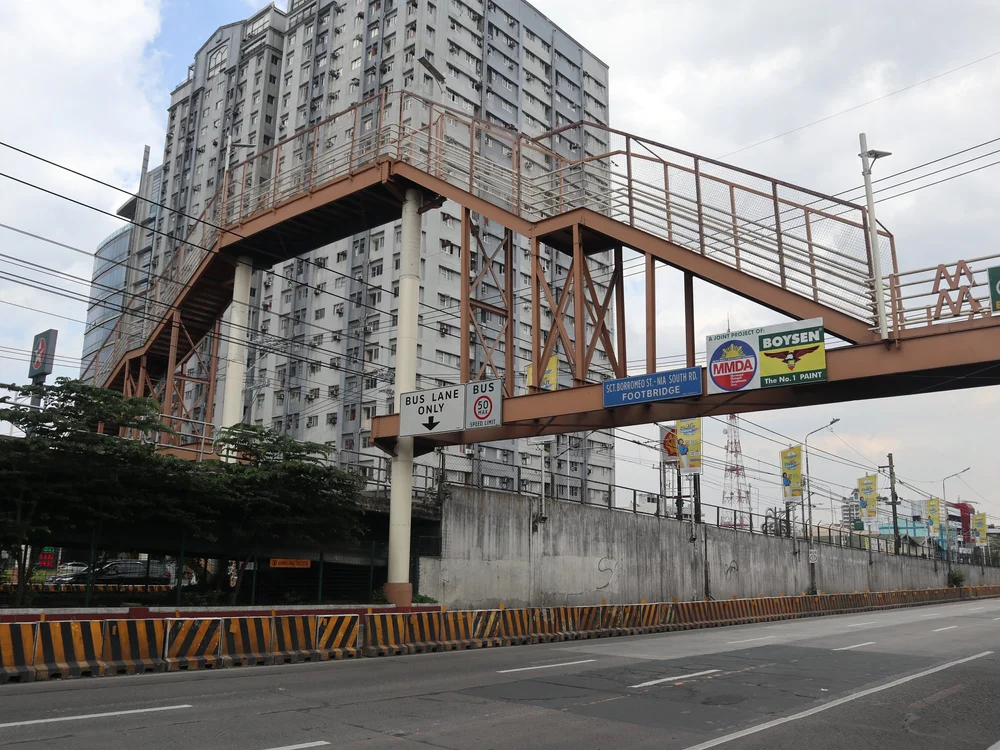EDSA’s ‘Stairway to Heaven’ Finally Coming Down

The “Stairway to Heaven” on EDSA (Source: Wikipedia)
The nine-meter-high footbridge, constructed in 2018 by the Metropolitan Manila Development Authority (MMDA), has been a subject of public criticism due to its steep incline and perceived inaccessibility.
A Controversial Structure
Built over the MRT-3 tracks along EDSA near the Kamuning station, the footbridge was intended to provide a safe crossing for pedestrians in an area prone to accidents. The MMDA allocated PHP10 million for its construction, which included solar-powered lights. However, the bridge’s steep design—featuring a 45-degree incline—drew immediate backlash from the public. Critics argued that it was not user-friendly, especially for senior citizens, persons with disabilities (PWDs), pregnant women, and those with vertigo.
The MMDA defended the design, stating that the height was necessary to clear the MRT-3’s power lines and that the bridge was intended for able-bodied individuals seeking a safer crossing.
Despite these explanations, the footbridge became a symbol of poor urban planning, with netizens and even foreign diplomats criticizing its design. In 2022, Dutch Consul General Dirk Janssen tweeted a photo of the bridge, stating, “There is no better way to make it clear to pedestrians that they don’t matter.”
Attempts at Improvement
In response to the public outcry, the MMDA made modifications to the footbridge. A landing area was added midway to provide pedestrians a place to rest, and the bridge was reopened in January 2019. Despite these efforts, the structure remained unpopular and was often cited as an example of infrastructure that failed to consider the needs of all users.
Despite these explanations, the footbridge became a symbol of poor urban planning, with netizens and even foreign diplomats criticizing its design.
Directive for Demolition
President Marcos’ call for the demolition of the Kamuning footbridge signals a shift towards more inclusive and user-friendly urban infrastructure. While specific details about the demolition timeline and plans for replacement have not been disclosed, the decision reflects a broader commitment to improving pedestrian facilities in Metro Manila.
Department of Transportation Secretary Vince Dizon, however, said that Mt. Kamuning will be replaced with a lower footbridge that has an elevator. It will be placed at the EDSA Bus Carousel Kamuning Station.
According to the DOTr, the height of the footbridge is equivalent to four to five floors of a building. The footbridge is dark at night, while it is slippery during the rainy season.
When Dizon used the footbridge, he noticed that it was shaky. The vibration was apparently caused by vehicles passing through underneath the footbridge.
Broader Implications
The controversy surrounding the Kamuning footbridge highlights the importance of inclusive design in public infrastructure. Urban planners and government agencies are now more aware of the need to consider the diverse needs of all citizens, including the elderly, PWDs, and other vulnerable groups. The issue serves as a reminder that functionality and accessibility should be paramount in public projects.
As Metro Manila continues to develop, the lessons learned from the Kamuning footbridge can guide future projects to ensure that public infrastructure serves the needs of all residents, promoting safety, accessibility, and inclusivity.

Rene Astudillo is a writer, book author and blogger and has recently retired from more than two decades of nonprofit community work in the Bay Area. He spends his time between California and the Philippines.
More articles from Rene Astudillo

No comments